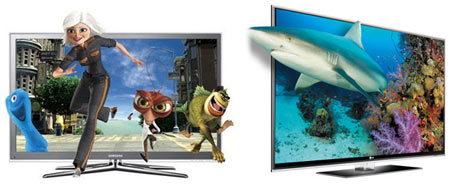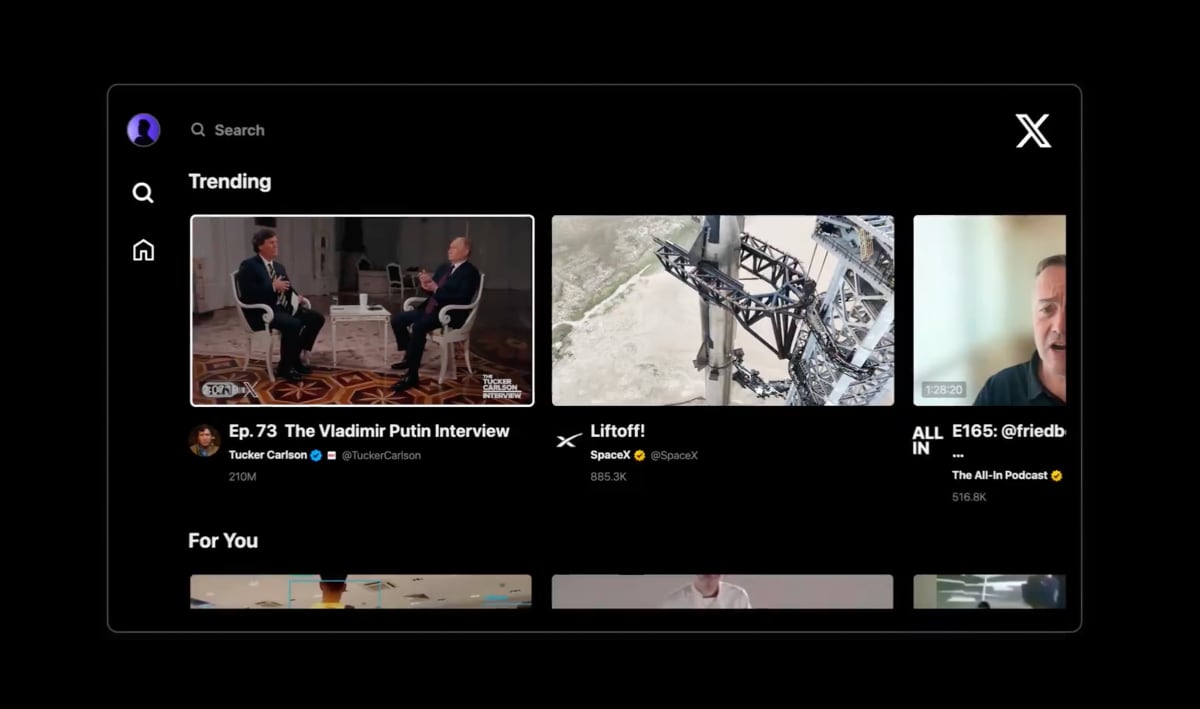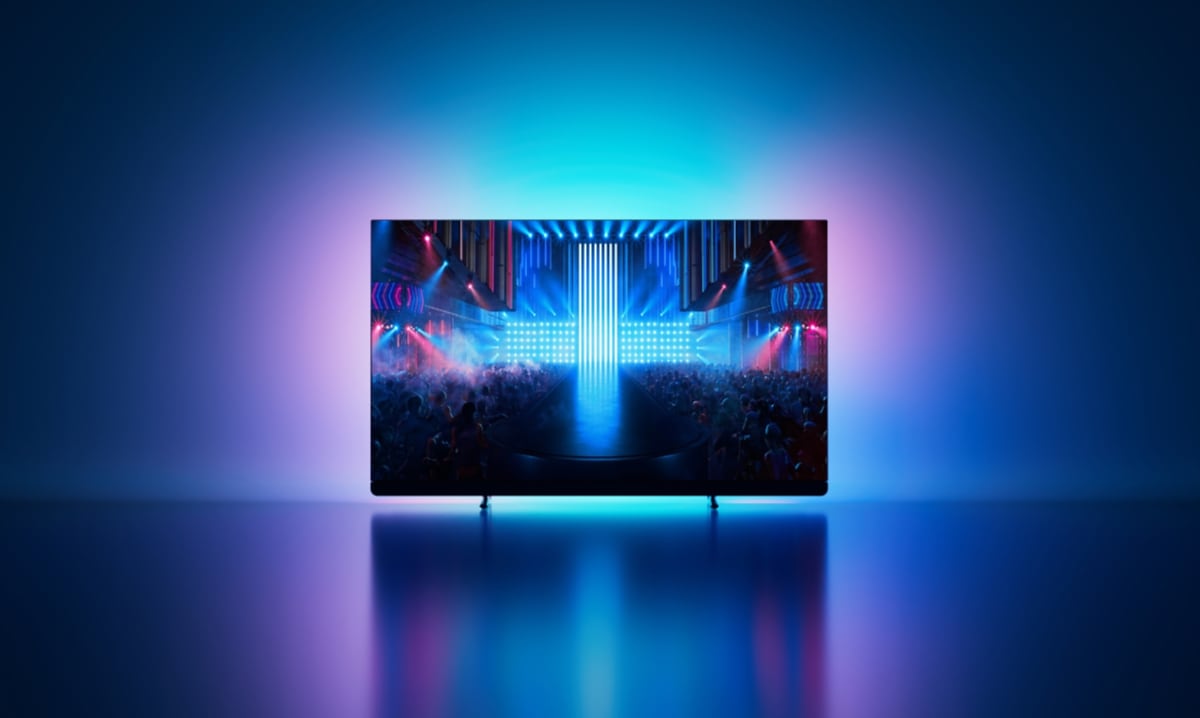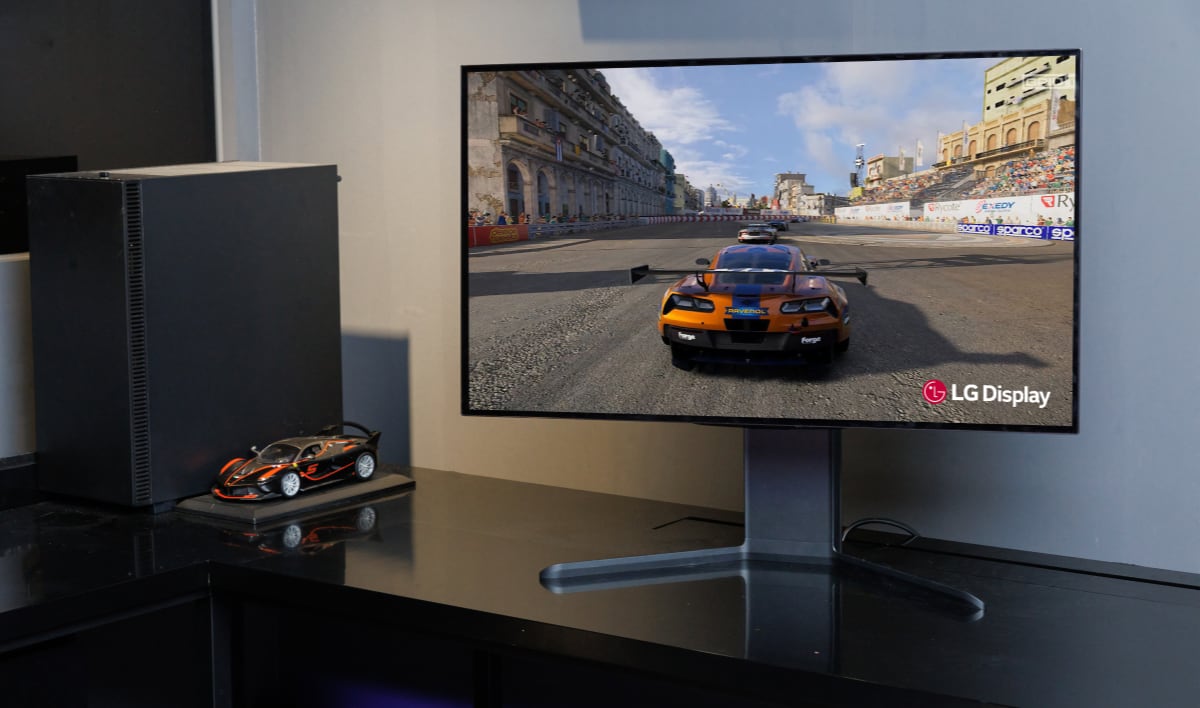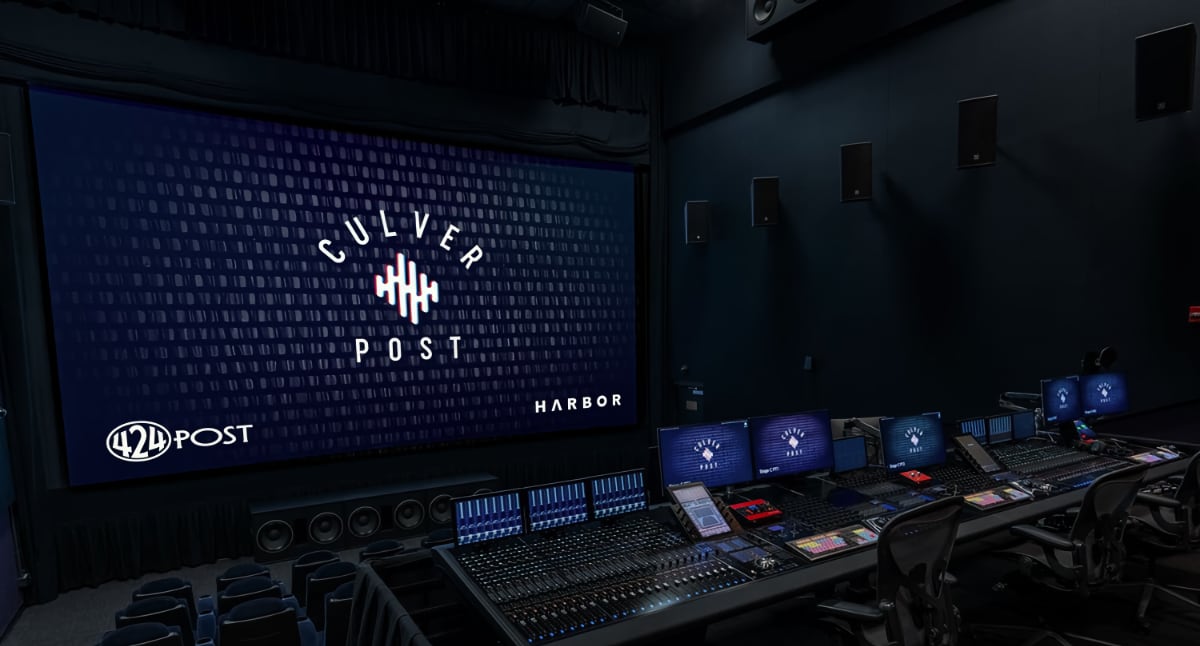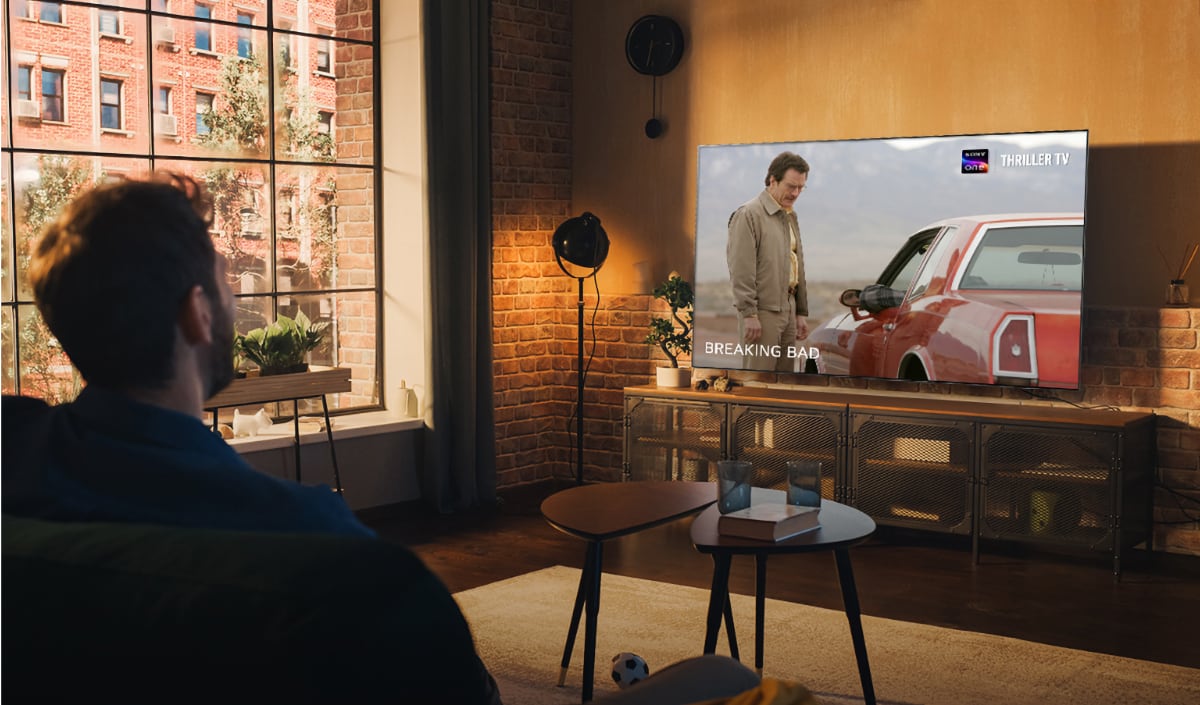We have recently tested the Samsung C8000 and LG LX9500 TVs. Both of these TVs are also 3DTVs and you can find more views on the 3D picture quality in the two separate reviews (LG LX9500 here and Samsung C8000 here). In this article we’ll do a heads up comparison of the two 3DTVs.
3D: Samsung C8000 vs. LG LX9500
In this short review FlatpanelsHD will elaborate on the differences between the two 3DTVs from Samsung and LG. We’ll examine 3D depth, 3D crosstalk (right and left picture overlapping) and compare the 3D glasses
Disclaimer: Some of the pictures have been taken with the 3D effect and some without the 3D effect. Be careful not to compare the 3D picture because the pictures are reproduced different because the glasses utilize different polarizations.
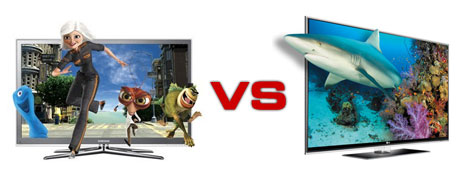
3D comparison: Samsung C8000 vs. LX9500
3D glasses
Both TVs are based on the active 3D shutter glasses and both are rechargeable through USB. You can see the 3D glasses below. Samsung to the left and LG to the right.
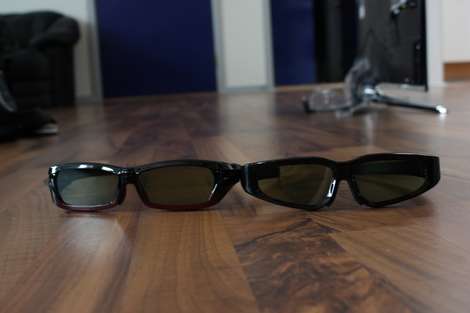
3D comparison: Samsung C8000 vs. LX9500
LGs glasses are a bit tighter around the head and the ears but the 3D glasses are quite similar all in all. See the picture below with LG to the left and Samsung to the right.
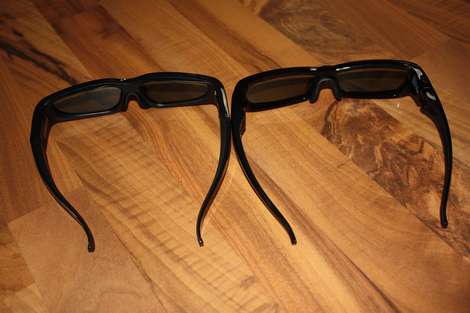
3D comparison: Samsung C8000 vs. LX9500
The glasses operate the same way. If you tilt your head the picture will get darker.
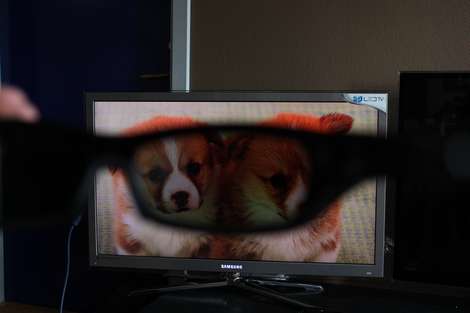
3D comparison: Samsung C8000 vs. LX9500
On a 90 degree angle the picture goes completely dark.
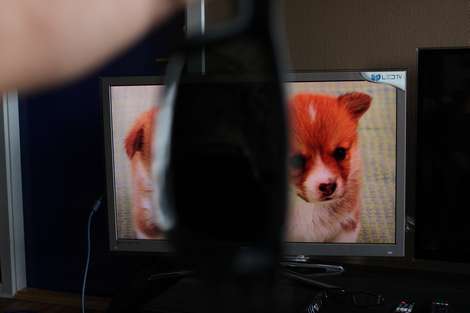
3D comparison: Samsung C8000 vs. LX9500
This happens because there's a polarizer in the glasses and a polarizer in the LCD panel. This will not happen on 3D plasma TVs.
3D picture and depth
Both TVs have quite good 3D depth. The visual difference between the object in the front and in the background is good and most objects appear detailed and defined.
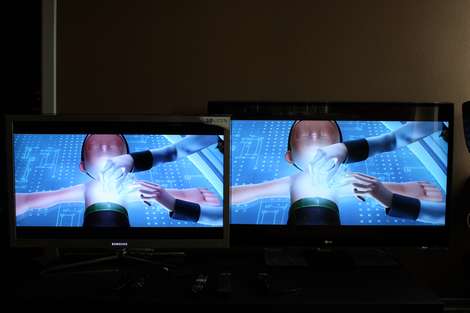
3D comparison: Samsung C8000 vs. LX9500
Samsung C8000 has a somewhat darker 3D picture than LG LX9500 that also makes some scenes appear more intense together with a better impression of 3D depth but some of the darkest colors are not distinguished on C8000.
The color reproduction is different between the two TVs. LG LX9500 has a brighter picture with a higher brightness level which is important for daytime 3D viewing. However, on Samsung C8000 you can increase the backlight level in the menu in the 3D mode.
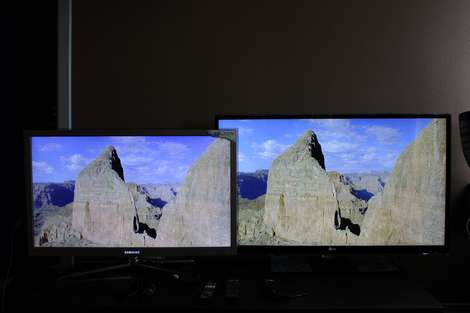
3D comparison: Samsung C8000 vs. LX9500
LG LX9500 has a very reflective glass front and this is a bit annoying during daytime. Samsung C8000 deals much better with reflections from sunlight and lamps.
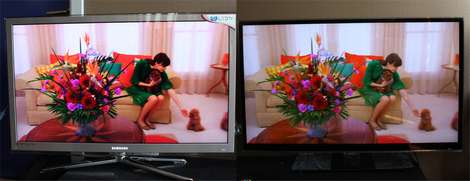
3D comparison: Samsung C8000 vs. LX9500
One thing that I like on both TVs is that the out-of-picture 3D effect is more convincing than on Panasonic VT25/VT20. I don't have the Panasonic here for comparison at the moment but we have tested it earlier and I can recall the 3D effect quite clearly. On Panasonic VT25/VT20 object that stepped out of the panel seemed a bit blurry and unnatural.
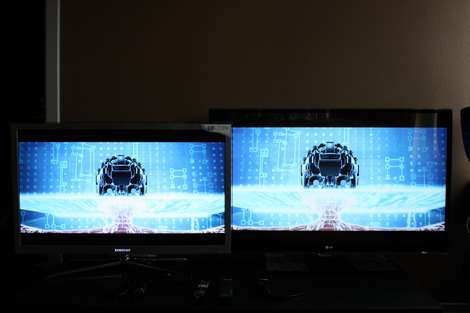
3D comparison: Samsung C8000 vs. LX9500
On both LG LX9500 and Samsung C8000 these effects are better. A part of our 3D test is a scene with some water splashing on the screen, and on LX9500 and C8000 this effect seems more real and the water drops were more detailed, thus making them appear closer to you. The out-of-picture effect is a bit more immersive.
The motion 3D reproduction is better on LX9500, probably because of the scanning backlight system. The picture gets less blurry when the picture pans across a landscape on LX9500.
Also, both TVs have a higher light output than 3D plasma TVs. I advise you to experience 3D in dark environments but if you must watch 3D during daytime LCD-TVs are better because of the high light output.
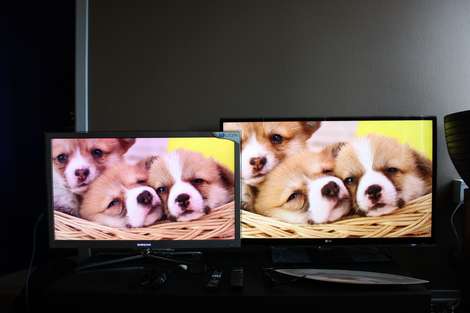
3D comparison: Samsung C8000 vs. LX9500
On Samsung C8000 you can adjust some picture settings and select either the Standard or the Movie picture preset in the 3D mode. On LX9500 picture settings are disabled in 3D mode.
3D crosstalk
Crosstalk refers to the phenomenon where the pictures intended for the left eye and the pictures intended for the right eye are not clearly distinguished by the 3DTV and therefore some of the different picture elements are visible when they shouldn't be.
This creates a transparent and visible halo effect around objects because the left and right images mix up, and it happens simply because the TV is fast enough (the response time and refresh rate is too slow). See the picture below for an example. The picture is not an actual picture from either C8000 or LX9500 – just an example.

And really, crosstalk is the most important 3D element, and my primary concern with both TVs.
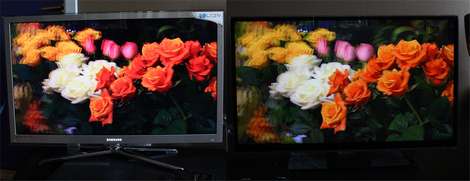
3D comparison: Samsung C8000 vs. LX9500
Samsung C8000 and LG LX9500 both have crosstalk issues. And a lot more than on Panasonic VT25/VT20 that had almost no crosstalk issues. This is a problem with 3D and LCD/LED panels. They're simply not fast enough to display 3D without crosstalk and this really affects the 3D picture quality.
The crosstalk issues are different on the two TVs. LG LX9500 has a ghost look where the crosstalk around objects has a slightly transparent hue. On Samsung C8000 the crosstalk is a bit more"muddy" and darker, thus making it a bit more visible in practice.

3D comparison: Samsung C8000 vs. LX9500
Samsung C8000 has more crosstalk than LG LX9500 overall but it also depends on the content. On a picture with a lot of dark colors crosstalk on Samsung C8000 is less visible than on LX9500 but on bright images C8000 clearly has more crosstalk.
Both TVs have crosstalk issues on both near objects and objects in the distance. But Samsung C8000 seems to have bigger problems with dark objects on bright background if they're very close to the viewer.
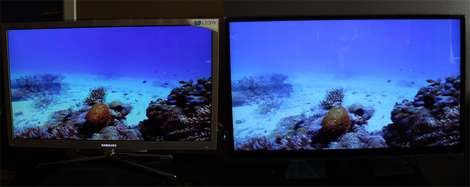
3D comparison: Samsung C8000 vs. LX9500
In some scenes the crosstalk is also reducing the 3D depth. I talked about this in the LX9500 review but if you watch an underwater scene that has a lot of fishes (and therefore a lot of different objects) the crosstalk issues will actually reduce 3D depth because it's distracting to the eyes.
The crosstalk issue is also enhanced depending on the 3D material. For example on the PS3 games that have recently been updated to support 3D. Wipeout is an example.
Because it only runs at 720p30 double-packed (30 Hz for each eye, 60 Hz overall) the crosstalk issue is enhanced on a TV that has a tendency to reproduce the crosstalk effects. Games on gaming consoles are very dynamic and alive and pictures are updated much more frequently.
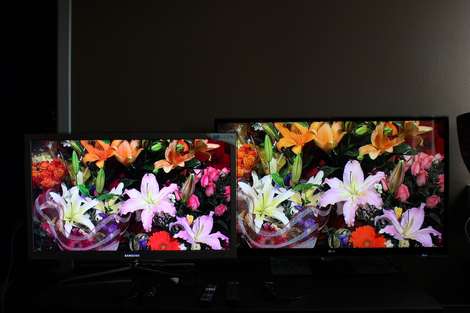
3D comparison: Samsung C8000 vs. LX9500
We experienced worse crosstalk issues on PS3 games for example. Also, crosstalk seems more visible with high quality content because the elements are more detailed.
Conclusion
All in all the 3D picture quality is not perfect on either of the two 3DTV models. The 3DTVs have good picture characteristics such as high light output and good out-of-picture 3D effects but the crosstalk issues are too visible.
This is true for both LG LX9500 and Samsung C8000 but there are some differences. Samsung C8000 reproduces slightly more intense 3D pictures and in some scenes the 3D depth is a bit better. LG LX9500 has a higher light output but even during daytime you're still bothered with the reflections in the front glass. LX9500 has less crosstalk but it's still an issue.
At the moment Panasonic VT25/VT20 remains our 3D reference TV. It has almost no crosstalk issues and this has proven to be the most important factor when it comes to 3D viewing. And the visual difference is significant. It seems that at the moment LCD/LED-TVs are simply not fast enough to reproduce perfect 3D images.
Read all of our 3DTV reviews:
LG LX9500
Samsung C8000
Panasonic VT25/VT20
Questions
If you have questions regarding this test please use this forum thread: 3D comparison: Samsung C8000 vs. LG LX9500
